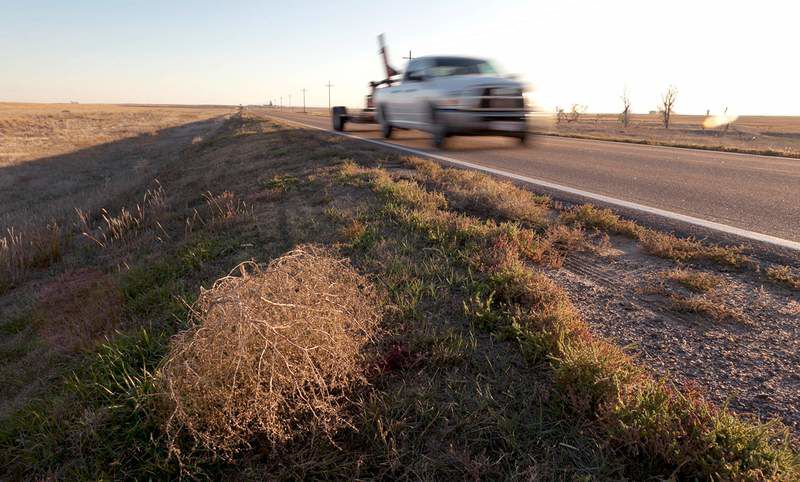Drifting along, tumbleweeds are piling up across the plains
Published 5:00 am Friday, October 28, 2011

- A drought in southwest Kansas is expected to make the tumbleweed season more manageable than in the past.
CIMARRON, Kan. — The ubiquitous swerving and darting forms making their hopscotch journey across the landscape here in recent days are one of the most storied — and least celebrated — natural migrations on the Great Plains.
Yes, the tumbleweeds are on the move again.
Over the coming weeks, more and more of these vagabond bundles of brush, immortalized in film and literature as the mascot of the middle of nowhere, will take to the wind, somersaulting across roads, catching on barbed wire and piling up in huge numbers throughout communities like this one.
People here will roll their eyes as they swap stories, new and old, about these consistently troublesome mischief makers.
The tumbleweeds cause car wrecks, tear down farmers’ fences and, as was the case here a few years back, make entire streets unnavigable without the help of a plow.
“It’s kind of like snow,” said Wiley McFarland, 83, a longtime rancher and community leader who wearily recalls pitchforking thousands of the plants out of his irrigation ditches and cattle corrals during particularly bad years. “But tumbleweeds don’t melt and go away. They sit till you get rid of them.”
The tumbleweed season is, mercifully, not that long. And this year locals say they expect the inundation to be more manageable than in years past. That would be a rare benefit of the drought afflicting the southwest corner of Kansas, during which locals have struggled to scratch a living out of soil that never was that generous to begin with.
“I don’t think it’s a real mean year. Not enough moisture,” said Kelly Clark, a part-time sheriff’s deputy. “But you can still see them growing there, and in a wind they’ll turn loose and they’ll go somewhere.”
Tumbleweed is actually the colloquial term for a whole range of bushy plants that use wind-fed journeys to spread seeds, a dispersal method of unfortunate efficiency. Here, people are referring to the Russian thistle, a fast-growing plant that more than a century ago hitchhiked into the country and found the American prairie an unusually accommodating place. Today the plants, some still green, others already brittle, fill vacant lots, roadside ditches and the neglected edges of farm fields.
Typically, they become airborne after the first freeze. Though various tumbleweeds grow across the country, they are most easily spotted in the flatness of the open plains, from Texas to North Dakota, as well as parts of the West, said Michael John Haddock, the author of “Wildflowers and Grasses of Kansas: A Field Guide.”
“It’s wide open spaces where the wind really blows where you will really see tumbleweeds tumbling,” said Haddock, an assistant dean at Kansas State University Libraries.
And because of their itinerant ways, they often strain the bonds of neighborliness, as they bounce off the field of one thoughtless farmer and into the fence of a more diligent caretaker of his land. “You don’t want to get us started on this,” said Verle Redger, as he eyed the early arrivals stacking up against his fences.
But not everyone is unhappy to see the wayfaring weeds on the roll again. Some locals gather big ones — which they say can eclipse 4 feet in diameter — for substitute Christmas trees. Tourists passing through often stop to take pictures, commenting that they look just like in the movies. And then there is Linda Katz, who collects them by the armful from outside her house in nearby Garden City.
Years ago, she jokingly set up a website for an imaginary Prairie Tumbleweed Farm — advertising the plants for up to $25 each. To her surprise, the orders started pouring in and now she has sold thousands to movie directors, homesick soldiers and home decoration stores. But she rarely addresses the packages to Kansas. “People here already know about tumbleweeds,” she said.






